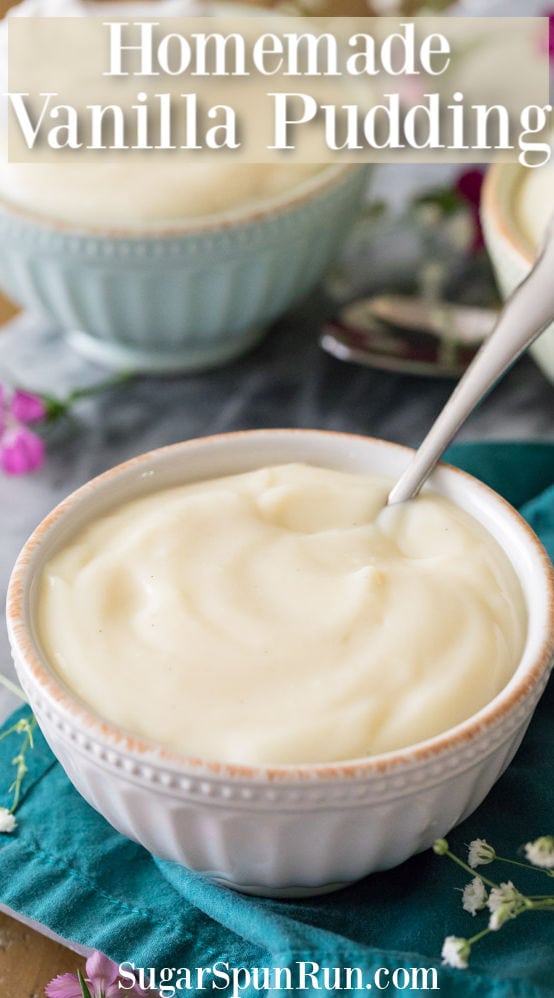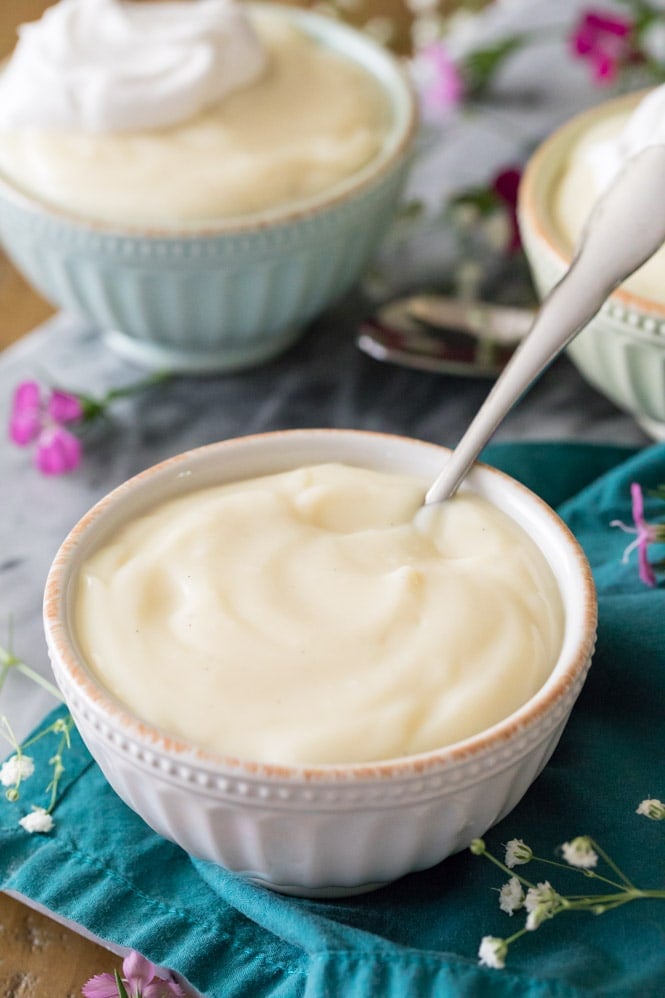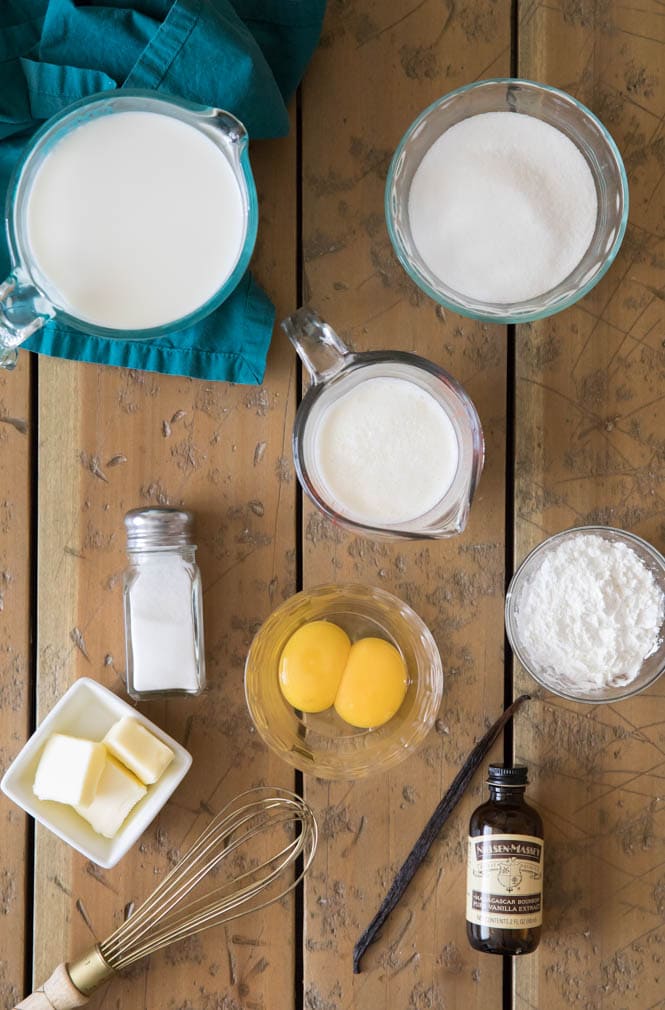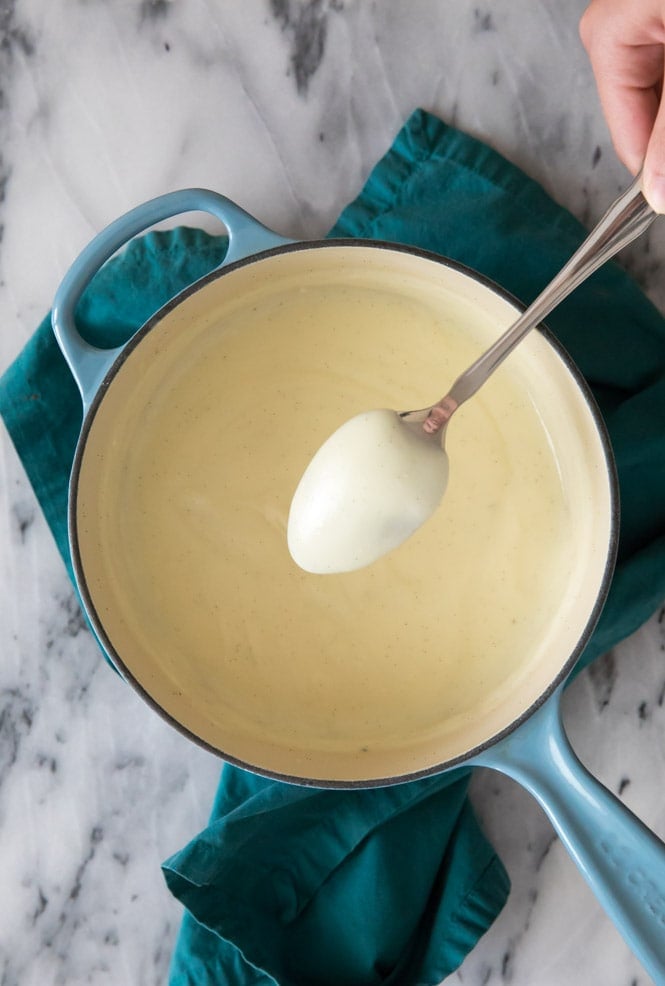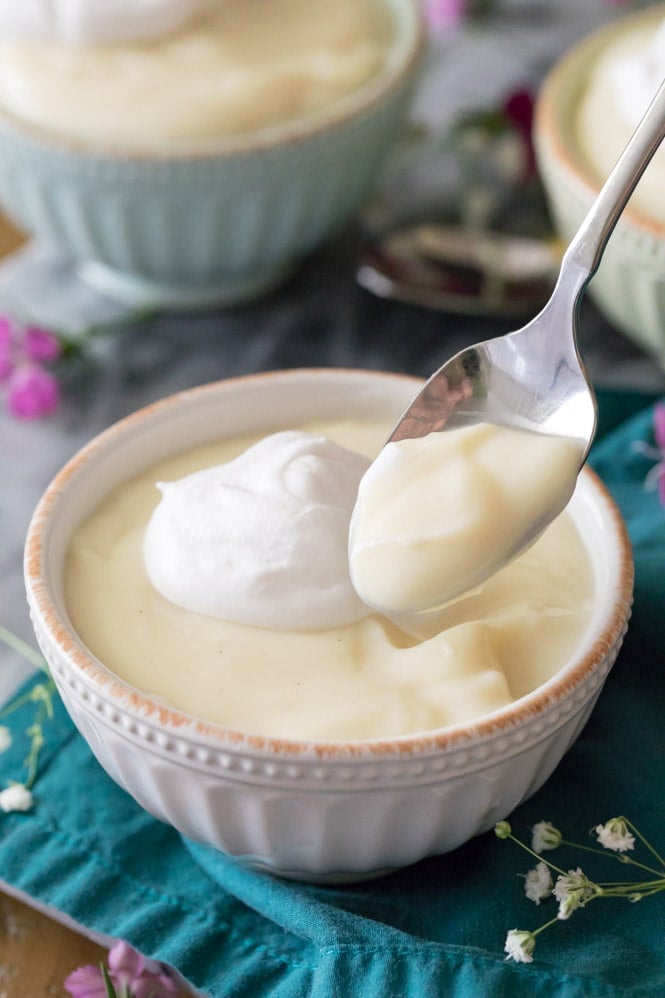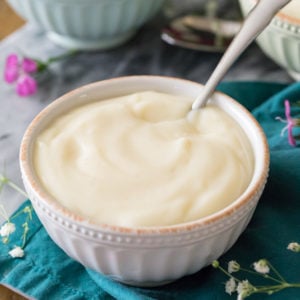Vanilla Pudding
Homemade pudding is roughly one million times better than anything you’re going to find at the grocery store. No snack pack and no packet of powder that you shake into cold milk can hold a candle to the taste of real, from-scratch vanilla pudding. Today’s recipe is a classic, and it’s surprisingly simple to make. Nothing but sweet & simple ingredients (I bet you have all of them in your pantry right now), a little bit of technique, and plenty of real authentic flavor — save those packets for pudding cookies instead!
Ingredients for Vanilla Pudding
Milk — Use whole milk for this recipe. I am not sure that the pudding will thicken properly if you substitute a lower fat milk or a milk substitute, such as almond milk, but I’m skeptical that it would. Heavy cream — I like to use a blend of milk and cream for a pudding that is full-bodied and not too thin/watery. Sugar — granulated, don’t worry the grains will dissolve, if you recall we also used granulated when making my silky-smooth lemon curd. Egg yolks — Just the yolks, and you’ll just need two of them! While I tried this recipe using as many as 5 yolks and as few as zero, I liked this middle ground with just two. They gave the pudding a nice thickened consistency without making it too thick. Discard the whites or save them to make meringues! Cornstarch — or “cornflour” as it’s called outside of the US. This is another thickening agent; it helps keep our vanilla pudding from being too watery! Vanilla — You can use either a vanilla bean or vanilla extract, both work well. The recipe includes instructions on where to add each — if using a bean you’ll add it in the beginning to get as much flavor as possible from the bean, if using extract we won’t add it until the end (for maximum flavor). Salt — for flavor Butter — We’ll stir this in at the end for a creamy vanilla pudding with a smooth, silky mouthfeel.
Tips for Making Homemade Vanilla Pudding:
Don’t Crank up the Heat!
When you first combine all of your ingredients on the stovetop, it’s easy to become impatient waiting for the pudding to thicken. However, keep your heat on medium (or even a notch below) so that the sugar has a chance to melt and you don’t end up cooking bits of your eggs. Turning up the heat to speed things along usually results in a pudding that is burnt or one that never thickens as it’s supposed to.
The Spoon Test
It’s important that your pudding thicken properly, but how do you know if it’s thick enough? The easiest way that I’ve found to tell is to dip a (clean) spoon into the pudding. It should coat the back of the spoon, and if you use your finger do draw a line through the pudding the line should hold its shape (excess pudding from the spoon shouldn’t flow back over the line). See the image above for an illustration of what thickened vanilla pudding looks like.
Vanilla Bean vs. Vanilla Extract
My personal preference is to use a vanilla bean in this recipe (can’t beat that pure vanilla flavor!) but they are expensive right now and you can still make perfectly delicious vanilla pudding without one. If you happen to have a vanilla bean you can spare, you’ll split it and toss it in at the beginning of the recipe so all of the flavor can make its way into your pudding (this is also what I do when I make Pastry Cream for Cream Puffs). If using extract, you’ll actually want to add it after cooking for best flavor. The recipe includes instructions for both!
Use a Strainer
A fine mesh strainer is ideal for catching any lumps or tiny bits of cooked egg that might’ve formed in your pudding. While you can make vanilla pudding without one, it’s ideal for guaranteeing a silky smooth pudding. I linked to the one that I own in the recipe description. Looking for a good chocolate version? Try my easy Chocolate Pudding instead!
Are Vanilla Pudding and Custard the Same Thing?
Vanilla pudding and custard are similar, but if you want to get technical, there are some differences. Generally, puddings are made with milk and cream and are thickened using cornstarch while custards are thickened with egg yolks. By some standards, this vanilla pudding recipe could be considered a pudding/custard hybrid, but since it’s primarily thickened by the cornstarch and has a silkier, less firm consistency than is generally considered acceptable for custards, I definitely think it falls into the pudding camp. Alternatively, my banana cream pie and coconut cream pie consist of a base that is more similar to a custard. I found that some sources claim that custard must also be baked (like Creme Brûlée), but not everyone seems to agree. Here’s a great article about the differences between the two that goes into even more detail if you want to check that out! Enjoy! Let’s bake together! Follow me on my YouTube channel where I’ve already uploaded over 150 recipe videos that you can watch for free!
